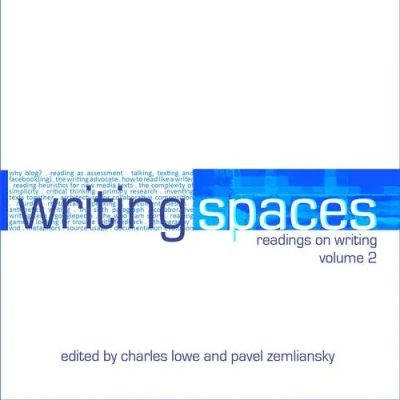10 Gitanjali DasBender’s “Critical Thinking in College Writing: From the Personal to the Academic”
Writing Spaces Volume 2
The concept of “critical thinking” can be intimidating and nebulous even to people experienced with academic writing and research. However, the process of critical thinking can be one with concrete steps and stages that lead a reader to a thorough understanding of a text (or piece of media), and eventually help that reader create a piece of writing about that text. By approaching critical thinking as a process we all perform and can improve upon, Gita DasBender helps us to see how we are all critical thinkers and writers.
“While critical thinking may be subject-specific, that is to say, it can vary in method and technique depending on the discipline, most of its general principles such as rational thinking, making independent judgments, and a healthy skepticism of what is being read, are common to all the disciplines.”
MLA Citation Examples
Works Cited
Dasbender, Gitanjali. Critical Thinking in College Writing: From the Personal to the Academic.” Writing Spaces: Readings on Writing Volume 2, edited by Charles Lowe and Pavel Zemliansky, Parlor Press, 2011, pp. 37-51.
In-text citation
“While critical thinking may be subject-specific, that is to say, it can vary in method and technique depending on the discipline, most of its general principles such as rational thinking, making independent evaluations and judgments, and a healthy skepticism of what is being read, are common to all disciplines” (Dasbender 38).
References
Dasbender, G. (2011). Critical thinking in college writing: From the personal to the academic. In Charles Lowe and Pavel Zemliansky (Eds.), Writing spaces: readings on writing, vol. 2 (pp. 37-51). New York: Parlor Press.
In-text citation
“While critical thinking may be subject-specific, that is to say, it can vary in method and technique depending on the discipline, most of its general principles such as rational thinking, making independent evaluations and judgments, and a healthy skepticism of what is being read, are common to all disciplines” (Dasbender, 2011, p. 38).
Chicago Citation Examples
Bibliography
Gitanjali, Dasbender. “Critical Thinking in College Writing: From the Personal to the Academic,” in Writing Spaces: Reading on Writing Volume 2, ed. Charles Lowe and Pavel Zemliansky (New York: Parlor Press, 2011), 37-51.
In-text citation
“While critical thinking may be subject-specific, that is to say, it can vary in method and technique depending on the discipline, most of its general principles such as rational thinking, making independent evaluations and judgments, and a healthy skepticism of what is being read, are common to all disciplines” (Dasbender, 2011, 38).


